When Dorth Vader crossed the finish line in front in the June 6 Ogden Phipps Stakes (G1) at Saratoga Race Course, it marked the first grade 1 victory for owner and breeder John Ropes. A member of the racing industry for 45 years, Ropes purchased his Rosegrove Farm in Ocala, Fla. to pursue the challenge of breeding a star racehorse. Dorth Vader's Ogden Phipps win came at the end of a long and winding road of setbacks, trainer changes, and tough losses spanning her four-year journey on the racetrack. Throughout that time, Ropes displayed unwavering faith in his homebred filly, who ultimately rewarded her owner's patience by stamping her ticket to this year's Breeders' Cup Distaff (G1).
Ropes spoke with BloodHorse about his decision to focus on breeding, purchasing Dorth Vader's dam, Hardcore Candy, and the special ride he's embarked on with his indelible homebred filly.
BloodHorse: How did you become involved in the racing business?
John Ropes: I had an assistant with me at one time named Dana Smithers, she was the daughter of Andy Smithers, who was a trainer up in Canada. I told her I wanted to get a racehorse. I want to claim one. And she told me 'don't do it. You don't know what you're getting into.' But I was persistent. And finally, she introduced me to her dad when he came down from Canada. He would bring his horses down to Gulfstream Park during the winter. He called me up one day and said were going to go claim a horse at Gulfstream. So I went down there and we claimed this horse named Half French for $15,000. He was beaten 40 lengths. We were the only to drop a claim on the horse. And I asked Andy 'why we did we claim this horse?' And he said 'these trainers don't know what to do with him. Look at those feet, those are grass feet! He's running on the dirt and he needs the grass.' Sure enough, we took him to Canada and he won three allowance races on the turf. I got a $55,000 offer from someone at Saratoga to buy the horse and of course, I didn't sell him. He broke his leg two weeks later. Welcome to the horse industry.
BH: And then what made you want to enter the breeding side of the industry?
JR: We claimed a couple more after that and a few of them were fillies. I decided to breed them and (Smithers) guided me in that process. I made a lot of mistakes in the beginning, thinking breeding was an easy business. After awhile, I thought maybe I'll get a farm if real estate ever goes down. I bought a farm with a partner in Ocala and that was just before they passed the (Tax Reform Act of 1986), which meant that if you invested in racehorses but were not in the business you could write off the losses. It just created a boom in the horse business and the farm values.
However, I don't think you can be all things. So I gradually came to the conclusion that I wanted to be a breeder and sell horses at auction, which is what I set out to do in the late 90s. Later, I got an agent in Kentucky, Marette Farrell, who has been a wonderful guide for me in terms of breeding, and we embarked on a program that appears now that is finally coming to fruition.
BH: Do you typically race your homebreds or do you breed to sell?
JR: I try to sell most of them as yearlings. In fact, I have seven yearlings going to the Keeneland September Sale this year. I'll keep a few for the 2-year-old in training sales that I don't think are right for the yearling sales and I have some, mostly fillies, that I'll keep to race because at the end of their racing careers, they'll likely become good broodmares. I only race those that I can't sell at auction for one reason or another but have that potential or if something happens to them and they can't make the sales. I have four racing or getting ready to race right now.
BH: Dorth Vader, by Girvin , is Florida-bred. Do you keep all of your mares on your farm in Ocala and focus on the Florida breeding program?

JR: No. We have three mares in Florida that have been bred in Florida and I have eight in Kentucky. If they breed to stallions in Kentucky they will foal in Kentucky and then I'll bring them and their foals down to my farm in Florida for the winter.
Dorth Vader was born in Ocala at my farm. Girvin was at Ocala Stud at the time. I bred to him in his first year at stud. He had just come off the track then and didn't look like a stallion yet. David O'Farrell (owner of Ocala Stud) talked me into breeding him and I did and it turned out pretty good.
BH: What do you enjoy the most about breeding your own horses?
JR: I love the babies and the mares. Marette (Farrell) and I spend a great deal of time on matings, looking back three or four generations and trying to work out what might fit with the mares. I think its' fascinating.
I also do something at the breeding stock sales that a lot of people don't do. I'm not afraid to buy an older mare that's already produced and is carrying a nice baby. We have two yearlings, a Charlatan and a Mclean's Music going to the yearling sale that are out of older mares that are just beautiful horses. Those mares were 17 and 18 years old in foal when we bought them. I thought if you get a good foal that's all you need, just one. And both those mares are back in foal. In Kentucky, they just don't buy older mares.

BH: You purchased Hardcore Candy, a daughter of Yonaguska, at the 2014 OBS October Sale for $23,000. Can you recall what you liked about her?
JR: I had a trainer, John Tamarro Sr., in the 80s. And John had a cardiologist go around with him for about a year to try to determine what attributes would be needed to make a stakes horse. And one of the things he came up with, which pretty much everyone uses now, is the size of the heart. If the size of the heart isn't sufficient enough to produce the necessary oxygen to the muscles, it won't be a stakes horse. I don't believe a mare with a small heart can produce a stakes horse. I think it comes from the mare. So I only wanted to look at mares who were stakes winners or stakes-placed.
Hardcore Candy was a beautiful mare. And she was stakes-placed and looked like a bargain—and she was.
BH: In looking at Hardcore Candy's produce record, she's had four fillies since Dorth Vader. She's recently produced two full sibling sisters to Dorth Vader. What are your plans for the Girvin yearling and weanling?
JR: It took (Hardcore Candy) a while, but everything coming out after Dorth Vader has been just beautiful. I have a full sister to Dorth going to the September yearling sale that is gorgeous. (Hardcore Candy) had another weanling filly to Girvin this year that we will keep.
BH: Why did you ultimately decide to keep Dorth Vader and put her in race training?
JR: Dorth was not correct as a baby, so we weren't going to be able to sell her at a yearling sale. I sent her to a trainer, Gayle Woods, in Ocala, to develop her for me as a yearling. Once she was under saddle, Gayle said to me, 'Boy, this horse can run, you'd do well to take her to the track.'

BH: When did you think you might have something special on your hands?
JR: She stumbled out of the gate her first try, and then in her second start, she won a maiden special weight very easily. Then they put her in stakes races and she won two in a row. And then won the Davona Dale. She just exceeded our expectations. And then we are able to go to the Oaks, which was an incredible experience. She's been a wonderful horse to have and work with. Since I felt her future wasn't going to be in Florida that was why I sent her to (trainer) George Weaver. The Ogden Phipps was the first race he's won with Dorth. We came a neck away from winning the Acorn.
BH: You showed a lot of patience and faith in Dorth Vader in bringing her back to the races as a 5-year-old coming off her second significant layoff. It looks like she's rewarded you with a win at the highest level in the Ogden Phipps, a Breeders' Cup Challenge Series: Win and You're In race for the Breeders' Cup Distaff (G1) this fall at Del Mar.
JR: George (Weaver) says she's in the best shape she's ever been in. It was a tough decision (to keep her in training) because we had lots of offers, but we took a chance and believed in her. George has told me this is one of the best horses he's ever trained. You know, why are we in this game? You don't come across a homebred like that very often unless you're Godolphin. It's just been a wonderful experience having her. Our goal this year was to win a grade 1 this year, and secondary, we would love to go to the Breeders' Cup.







